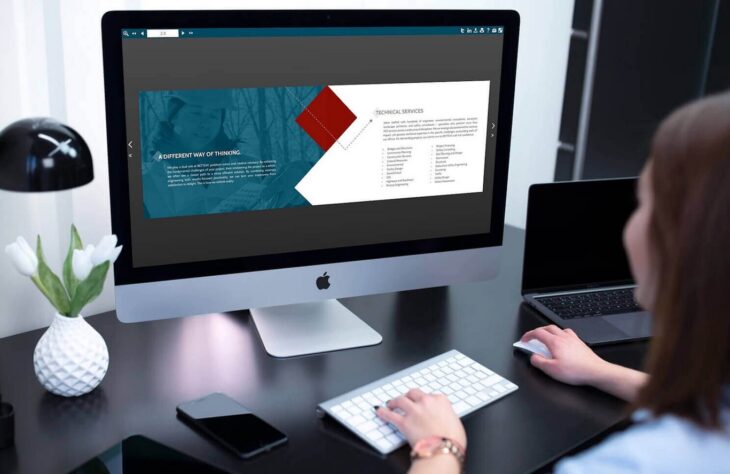
How to Make Your Brochure Stand Out From the Competition
Modern business owners have a host of digital marketing strategies to choose from, including search engine optimization and pay-per-click (PPC) advertising. But traditional printed marketing and advertising strategies still have a place in an effective campaign.
Brochures, specifically, are advantageous because they’re relatively inexpensive, they can be used to provide a ton of information in a small package, and they can be used flexibly; for example, you can distribute them in person or use them in direct mailers.
However, with so many businesses printing and distributing brochures, you’ll need some way to differentiate your business if you want to stand out.

The Importance of ROI
First, you should understand the importance of return on investment (ROI) in your marketing campaign. ROI is a measure of how much revenue your campaign generates compared to how much it costs to run that campaign; for a strategy to be considered effective, it must yield a positive ROI. In other words, it must generate more money than it costs.
The two broad ways to boost ROI with a marketing brochure are to lower your costs and improve your effectiveness. According to Printing Center USA, you can easily lower your costs by choosing the right online printing service provider – and printing in bulk to reduce your per unit cost.
As for improving your effectiveness, there are a number of strategies that can help you distinguish your materials from the competition – and persuade more customers to buy from your business.

Differentiating Your Brochure
These are some of the best strategies to help your brochure stand out in a crowded market:
- Hire a professional designer. First, hire a professional designer to put together your brochure. You may have the opportunity to build out your own brochure using online design tools, or by submitting images directly to a printer, but it’s much better to get someone with experience and education in this area. You can hire a designer full-time if you plan on putting together many brochures, or you can hire a contractor for a single job. Either way, you’ll be much happier with the bottom-line results.
- Invest in heavier stock. While thicker, more durable paper stock is going to increase your total costs per piece, it’s also going to make your brochure look more professional (and hopefully, make a better impression). People holding the brochure will feel like they’re holding something sturdy and professionally designed – and they’ll walk away with a better impression of your brand, even if they don’t consciously realize it.
- Choose unique images. There are millions of companies out there who use conventional imagery, or even stock images, for their brochures. Think about it; how often do you see the same generic photo of a married couple smiling on a white couch? If you do this, your brochure is going to blend in as white noise – and people will find it hard to take seriously. As you’re designing your brochure, be sure to choose plenty of unique images that both show off the uniqueness of your brand and products and still allow you to preserve your own identity.
- Be specific with your information. Too many brochures lead readers in with vague, generic headlines and high-level information. If you want your brochure to convince people that your stuff is worth buying, you’ll have to be more specific than that. Instead of listing a bullet point with the phrase, “get more done every day so you can do more of what you love,” try “save 35+ minutes every day, which you can use to…” It’s a much more persuasive argument.
- Get innovative. Surprises can make an experience more memorable – which is great news if you’re trying to make a long-lasting good impression on your audience. Try to include a handful of twists that give your readers something they’ve never seen in a brochure before. You can include some interesting images, a unique fold that makes the brochure open in a different way, or a novel approach to writing copy.
- Keep it minimalistic. While it’s certainly valuable to include plenty of specific, detailed information that your customers can use to make informed buying decisions, you also have to resist the temptation to stuff your brochure full of as much information as possible. For the most part, brochures are more effective when they’re minimalistic; they should contain only as much information as necessary to persuade someone, with plenty of white space so it can be easily seen and absorbed.
- Frame your information as a narrative. It might be effective to list the raw information about your product or service in the brochure, but it could be even more effective to frame your information as a narrative. How can you tell a story with a beginning, middle, and end? If you can do this, you’ll win over a greater percentage of potential customers.
- Provide opportunities for further research/reading. For many people, reading a brochure won’t be enough to convince them to buy something. If you want to close the deal, you’ll need to provide them access to further reading – such as a link to an online guide that’s more thorough or more detailed.

Distributing Your Brochure
Obviously, the success of your strategy also largely depends on your ability to distribute your brochure effectively. Here, one of the most important ingredients for success is audience targeting; you need to know who your audience is, tailor your brochure specifically to them, and ensure they eventually get their hands on it. Some audiences are likely to read brochures that are mailed to them directly, while others may require an even more direct approach.
No matter how you design and distribute your brochure, make sure you take the time to measure your results. Measuring and analyzing the results of your campaign will help you figure out what went right, what went wrong, and what you can do differently the next time you start a brochure campaign from scratch. Without these data, you’ll have no barometer for your success.